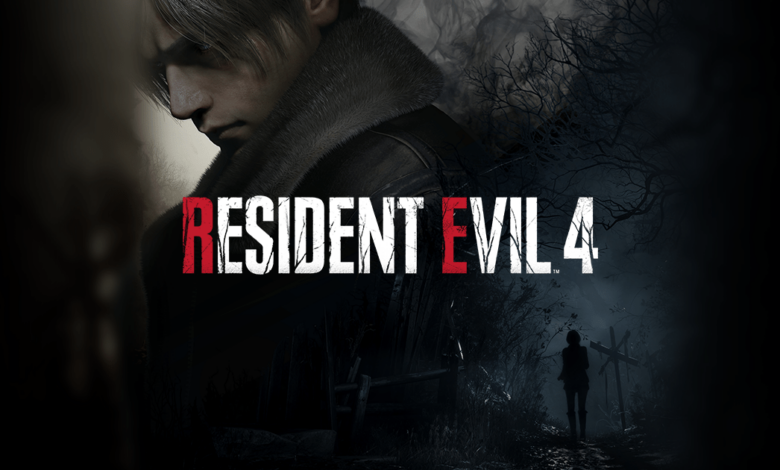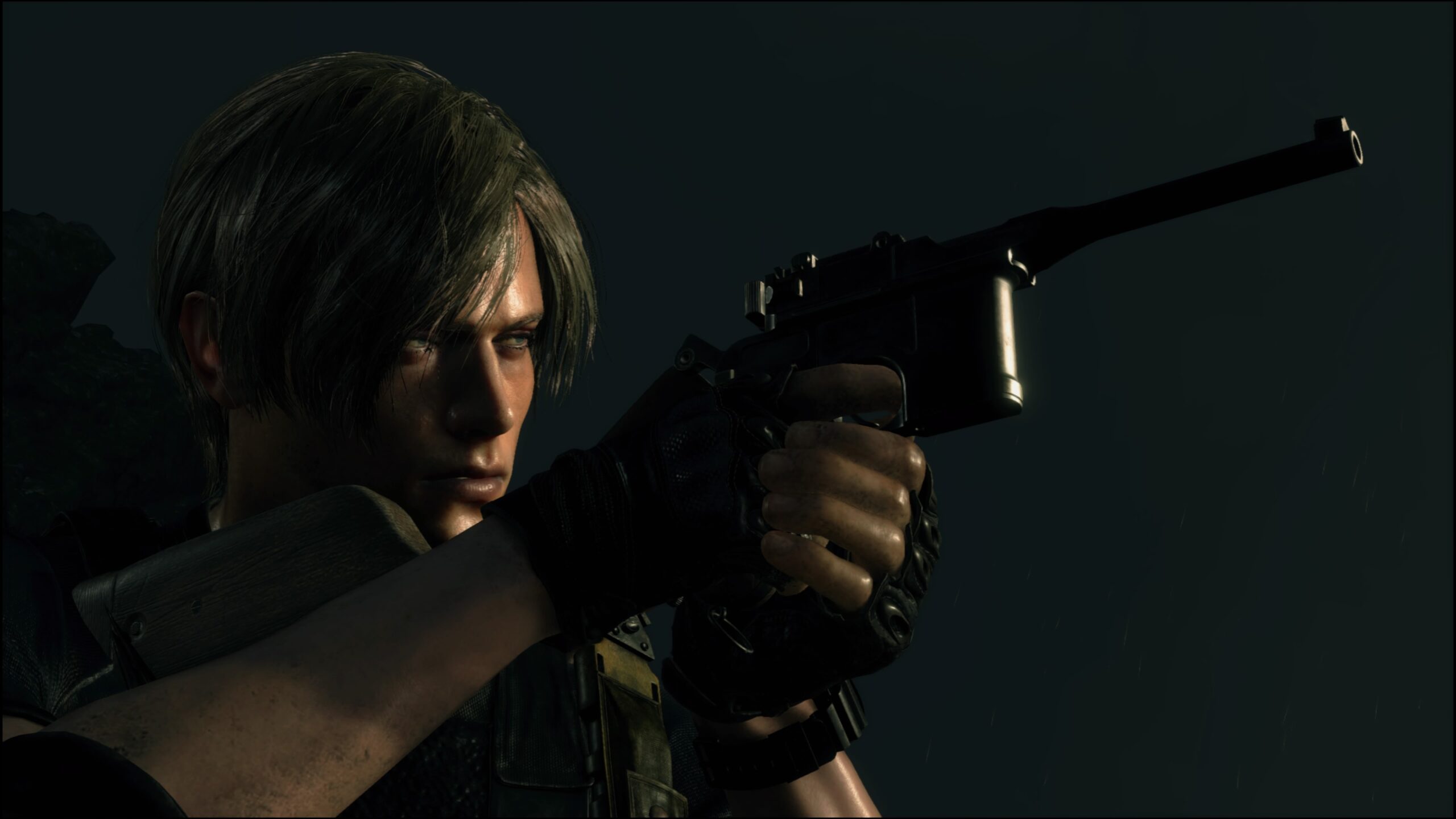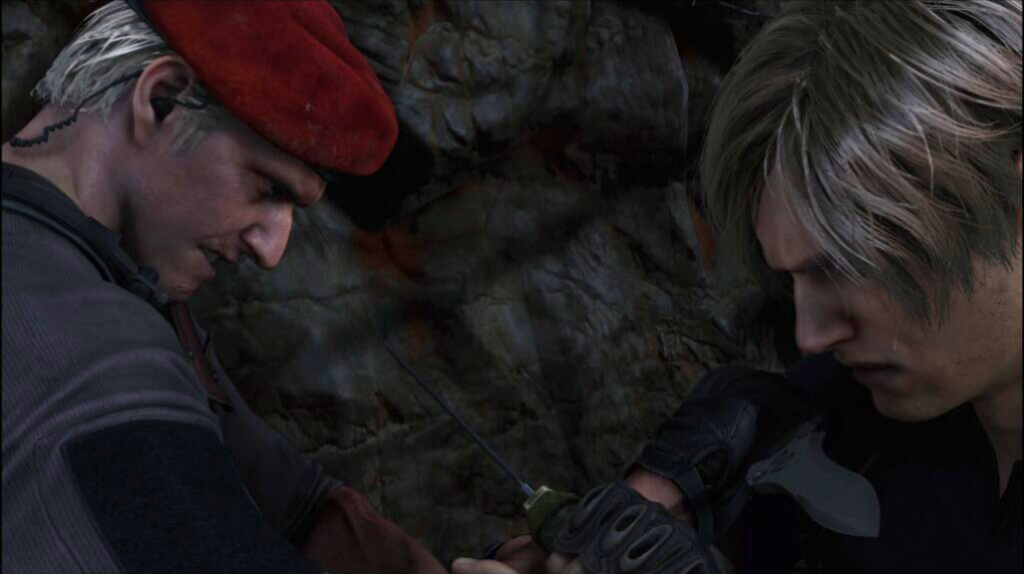Review: Resident Evil 4 (PlayStation 5)
Face off against Las Plagas again in this modern remake of a gaming classic!

What can I say about Resident Evil 4 (2023) that hasn’t been said already? I mean, the game received the coveted 10/10 review from IGN and has a 93% score overall on Metacritic. I could probably sum this entire review up by saying that Capcom delivered another flawless Resident Evil remake as usual.
However, I don’t think that would do this phenomenal release the justice it deserves. To put it simply, I am a diehard Resident Evil fan. And I put extremely high expectations on every game in the series. And ever since Capcom brought survival horror back in 2017 with RE7: Biohazard, the franchise continued to deliver smash hit after smash hit.
Alongside producing another stellar original entry in Resident Evil: Village, Capcom also revived some classic nostalgia with a brilliant remake of Resident Evil 2 in 2019. While the follow-up RE3 remake saw some negative feedback for cut content, it nonetheless remains another solid entry. Naturally, the next title to get Capcom’s remake treatment is Resident Evil 4.
Given the pedestal the 2005 RE4 sits on for many fans, as well as the bar Capcom placed for crafting an amazing remake, everyone set their expectations high. Could the new game live up to the hype and create the perfect blend of nostalgia and modern in a similar vein of RE2? Or would the new game face the same problems that held RE3 back from living up to its true potential?
The short answer: Resident Evil 4 not only lived up to the hype, but I believe it exceeded it.
Who’s ready for bingo?

If you played the original Resident Evil 4 from 2005 (or any one of its numerous ports), you already know the story. Years after the Raccoon City outbreak, Umbrella goes under and Leon finds his way into a new job serving directly under the President of the United States. The game kicks off when Leon goes on a mission to Europe to rescue the president’s kidnapped daughter Ashley. However, with the looming threat of the Los Illuminados cult and the new parasitic bioweapon Las Plagas, Leon must once again face evil head on in a mysterious village.
However, while the overall plot and general beats remain the same, the remake differentiates itself in many of the details. Notably, all of the game’s characters have significantly more depth on an emotional level than the campy 2005 title. Though the remake doesn’t lose its cheesy charm entirely, it does balance its jokes with an overall darker tone.
While that may divide some RE4 fans, I find the change very welcome. Leon went through Hell in Raccoon City, and even in his elevated position of serving the President, that trauma still haunts him. Of course, he still has his famous one-liners, but this time, Leon’s humor seems to come from a place of coping.
Taking the time to give Leon a quiet moment to talk about Raccoon City with Ada later in the story reminds players that he isn’t just a witty suplex-machine. Instead, Leon is human. Sure, he’s got a sense of humor, but he feels pain too. And he has this strong desire to save Ashley, not only because it’s his job, but because he can’t bear to see the horrors of Bioweapons take another innocent life.
Putting new twists on familiar moments

Leon is not the only character to receive more natural development in Resident Evil 4. Luis also gets considerably more depth. Though he’s still mouthy and full of arrogant swagger, like Leon, Luis uses it to cope with his own traumas.
Of course, in the original, we knew Luis helped Saddler obtain and research Las Plagas before he decided to redeem himself by helping Leon and Ashley. However, now, we know that Luis’ past ties all the way back to Umbrella, making his need for redemption that much greater. And since we spend a great deal more time with Luis in the remake than the original, his ultimate fate actually feels more tragic, and Leon responds much more appropriately.
Ashley, too, receives some serious changes to her character. While she begins as a damsel in distress, and does get captured a couple more times throughout the story, she also goes through a major arc. As the story goes on, Ashley becomes stronger and more capable, saving Leon’s life on two separate occasions.
Villains also receive more depth. Most notably, Krauser stands out as a much more compelling enemy than he was in the original game. Of course, we knew that he previously worked for the U.S. government alongside Leon before betraying them by orchestrating Ashley’s abduction. However, the emotional weight and history between him and Leon feels much more real this time around than before. Additionally, Krauser’s motivations and why he became corrupted packs a greater punch.
See the village in stunning detail

Like the original Resident Evil 4, the three main areas you’ll spend time in throughout the remake include the old village, Salazar’s grand castle and the militant island. However, to say things got a visual overhaul would be an understatement. Simply put, the game looks and runs phenomenally.
Performance-wise, I never had a single issue with resolution or framerate during my entire playthrough. Everything looked and ran smoothly from start to finish. On top of that, I did not even encounter a single glitch. Though that shouldn’t be too impressive, in the modern-age of AAA games releasing in broken states, Resident Evil 4 is polished to a tee. Capcom didn’t even need to delay the game for that either. Kudos to you!
As for the environments themselves, they stay very faithful to the original game, with some changes here and there. There are some areas that were cut, like the boss fight in the floating cargo cage in the cave on the island, most of what you remember from the original game is in the remake and looks better than ever.
*Note: The performance reviews relate directly to PlayStation 5. Unfortunately, PC players have faced numerous game-breaking glitches at launch resulting in crashes.
Cutting through the core gameplay

Now, that we talked through some of the notable story and character differences, let’s look at how Resident Evil 4 handles gameplay. Overall, the game plays very similarly to the RE2 and 3 remakes. Although RE4 already featured an over-the-shoulder perspective, the improved mobility in the remake helps make combat feel more fluid.
In addition, the remake retains core combat mechanics from the original RE4, such as roundhouse kicks and suplexes, performed on stunned enemies. Your knife also remains a crucial tool in combat, though its mechanics see a great overhaul in the remake. Though you can now use your knife to parry attacks and counter grabs, every time you use it, your knife loses durability before inevitably breaking.
While the remake’s changes mostly added features to gameplay, it did remove a notable mechanic from the original game: quick-time events. QTEs have become quite the lazy cliché in many modern AAA games, RE4 pioneered the use of hitting the right button at the right time during cinematic moments. However, in the remake, quick-time events are absent with the exception of the occasional notification to dodge attacks against certain enemies.
The abonnement of QTEs plays on the game’s overall direction of rewarding players for mastering the mechanics in ways that require strategy and thinking. Instead of cheap cinematic quick-time scenarios, the game focuses more on real-time scenarios that let you handle combat on your own. With approaches that range from hording enemies into a trap by shooting a lantern above them to knowing when best to throw a flashbang to destroy exposed Plagas, this is a game that rewards thinking.
And one new gameplay mechanic truly demonstrates this approach more than any other.
A sneaky new addition

That new feature is stealth. Leon now has the ability to crouch to sneak up behind enemies and use his knife in takedowns. Though you won’t be able to sneak by every Genado encounter in the game, there are multiple opportunities to use stealth kills to your advantage. In addition, there are also times where you can use stealth to avoid enemy encounters altogether.
One example comes from a late-game section in which you find yourself trapped in a room with a bunch of body bags hanging from the ceiling. Two of the bags hold regenerators. At first, I thought I would get the jump on them by shooting them before they even got out of the bag. Naturally, I quickly ran out of ammo and found myself dead.. multiple times.
Frustrated, I decided to take a new approach to the challenge. Instead of trying to shoot them before they popped out of the bag, I simply crouched and snuck through the whole room to the wheel you need to turn in order to open the exit. To my astonishment, the regenerators never woke up, and my stealth tactic paid off. I made it through one of the most challenging rooms in the game without firing off a single shot.
It’s details like this that make me love Resident Evil 4 so much. I always say that Resident Evil games reward players for being strategic, and this is pure proof of that. There was even another instance in the game where I circumvented an entire army of Genados by sneaking around a side path. So, while stealth won’t work in every scenario, its implementation feels right at home in the game.
What a charming briefcase

Returning for the Resident Evil 4 remake is its iconic inventory management system. Like before, your briefcase has limited room but allows you to rotate items around to best utilize the provided space. However, while you can do this completely manually, the new game now features a system to automatically arrange your items in the cleanest way for you.
Though I’m sure some veterans may scoff at the change, remember that just because you can automatically sort your items doesn’t mean you have to. If you’re an old-school player, then feel free to mix and match your items’ arrangements to your liking. However, the one-click sorting feature is great for players who would rather get back in the action quicker.
Other changes to inventory management are new customization items that provide players with different boosts. Alongside different briefcases you can purchase from the merchant, you can also win little charms from completing shooting range challenges that give you certain perks when applied.
Also working its way in from the previous remakes is the ability to craft ammo. This not only makes players strategically think through what ammo would be best to craft, but you also have to consider that stashing tons of gunpowder and resources will take up precious space in your inventory. Therefore, while you may want to hoard your gunpowder until you have the right resources to craft rifle ammo, compromising to make shotgun ammo may be more economical if you’re worried about taking up too much space. Fortunately, you can always save up to upgrade storage as well.
What are you buying?

The Merchant is back, and while he has a new voice, retains the same charm from the original game. Like before, players can spend their hard-earned PTAs and sell treasures to purchase new weapons, upgrades and more. However, there are some changes and additions with him that are worth noting.
Firstly, the spinel is no longer a treasure that you simply sell to the Merchant for extra cash. Instead, it is a special kind of treasure that you trade directly with him for special items unavailable to purchase by traditional means. This inherently gives players two separate currency systems used for different items.
Additionly, Capcom expanded on side challenges like the blue medallion challenge from the original Resident Evil 4. Along with that are a plethora of challenges (mostly find collectables or shoot hidden items) that provide special rewards. Though these challenges can quickly become tedious and repetitive, their inclusion as optional goals for completionists are a welcome addition.
Villainous encounters

For the most part, the boss fights in the Resident Evil 4 remake stay pretty consistent to the original game. Early encounters with the lake monster and giant play out beat for beat (all the way down to the wolf helping you against the giant if you saved it from the bear trap earlier). However, later fights see some subtle changes that are worth noting.
For instance, the fight against Salazar’s right hand underground generally plays out the same. Upon turning the power on to the elevator, you must dodge its attacks and strategically use the liquid nitrogen to stun the creature before landing damage. However, the entire encounter seems to go by much faster this time around instead of the long four-minute wait for the elevator in the original game.
Also, the fight against Salazar himself is much different than the original. He still turns from creepy little aristocrat into hulking monster, but the monster he becomes is more mobile and flies around the area spewing black acid at you. Essentially, this makes his encounter more fluid than before.
At the end, the fight against Saddler plays out in a more streamlined manner. However, I made it through the section with ease, as I horded magnum rounds and bought a rocket launcher just for this fight. And that’s before Ada throws you the special RPG.
A tactical fight that keeps you thinking

However, I have to say my favorite boss fight in the entire game is the one against Krauser. Like the original game, you actually fight Krauser twice. However, the first encounter with the knife fight is replaced with real-time combat rather than quick-time events. The skill-based encounter forces you to master your parries and dodges and strategize when to attack.
The second encounter plays similarly to the original but has some distinct changes. Firstly, Krauser as a character is no longer working for Wesker. Instead, he seeks absolute power after being put on a suicide mission by the U.S. Government. In addition, rather than being Leon’s equal, it’s established that Krauser was actually Leon’s teacher and drill instructor.
Then, the fight itself employs a lot more strategy than the original. In the original game, Krauser’s onslaught throughout the entire base appeared nearly never-ending. Here, though, he stalks you, occasionally popping in for some sneak attacks but always taunting you to let you know he’s watching.
There are also traps sprinkled in throughout to slow you down. The whole fight all the way to the moment where he mutates keeps you constantly changing tactics. Sometimes you need to slow down to disarm traps; other times, you need to move quickly to run into cover and avoid his ranged attacks. The whole fight keeps you on your toes and immerses you in a strategic battle of wits between student and master that I really appreciate.
Concluding thoughts on Resident Evil 4

Overall, Resident Evil 4 is a perfect video game remake. The game very rarely cut sections out of the original, and instead, added significantly to what was already there, creating brand new areas. Add in some of the side content given to you by the Merchant, and this game actually took me 20 hours to get to the end.
I would say that if you’re a fan of the cheesiness of the original game, you may feel a little let down by the more serious horror tone of the remake. However, if you love pure survival horror with a little action thrown in along the way, I can’t think of a more perfect game to play.
There are plenty of genuinely terrifying moments, like when you play as Ashley and have to get around all the knights, that keep you on edge 100% of the time. There are also times where you borderline panic because of the daunting challenges put in front of you, like when you and Luis have to take on the horde that swarms the cabin.
Essentially, the Resident Evil 4 remake perfectly balances retaining the original’s identity, while dialing up the intensity to insane amounts. I highly recommend this game to both veterans of the series and newcomers who want to get into the survival horror genre alike.
Resident Evil 4 is available now on PlayStation 5, PlayStation 4, Xbox Series X/S and PC.
VERDICT
EXCELLENT
EXCELLENT
Overall, Resident Evil 4 is a perfect video game remake. The game very rarely cut sections out of the original, and instead, added significantly to what was already there, creating brand new areas. Add in some of the side content given to you by the Merchant, and this game actually took me 20 hours to get to the end.

